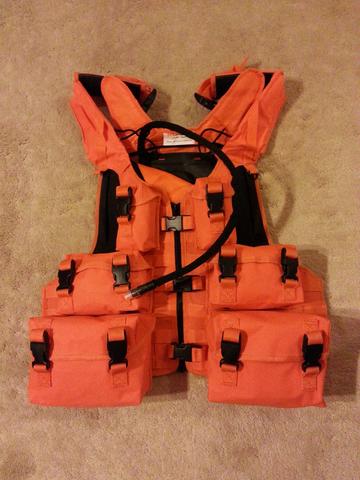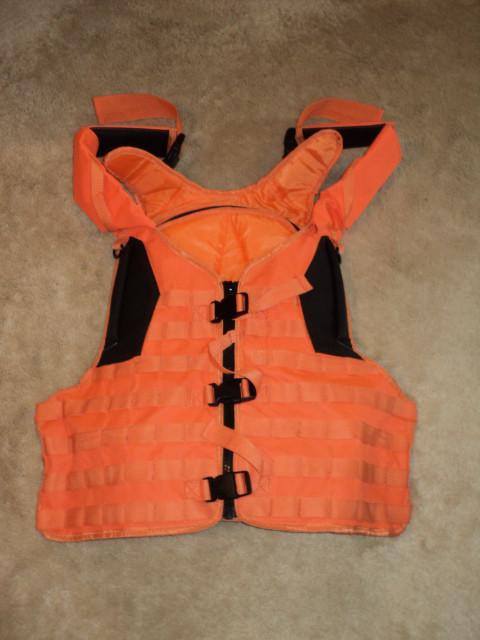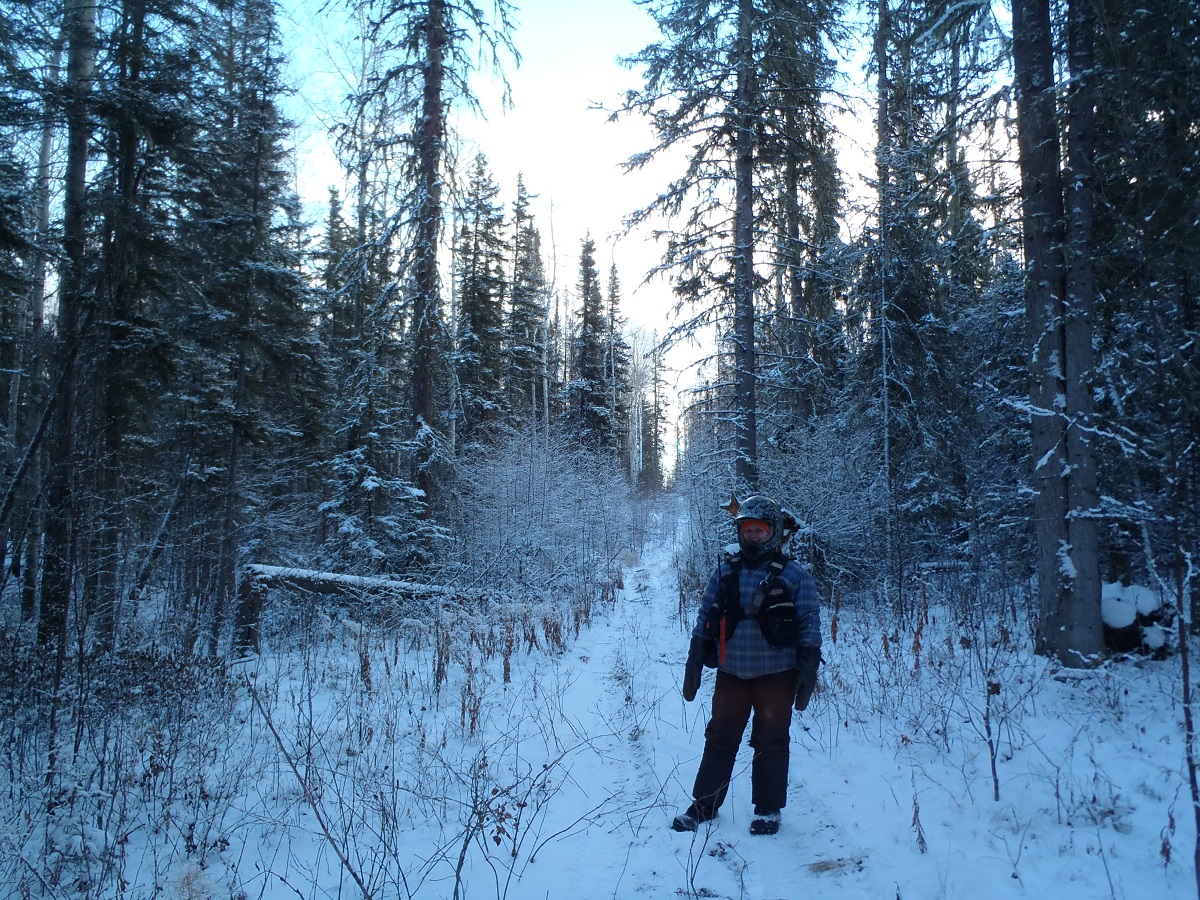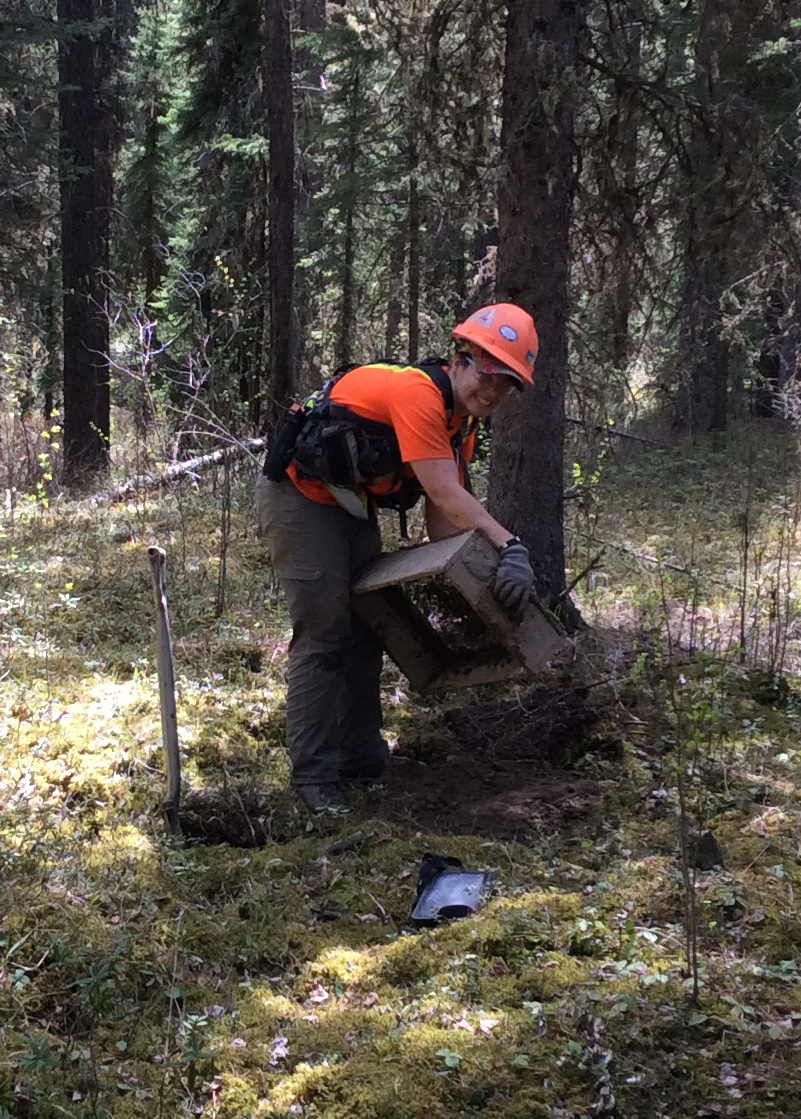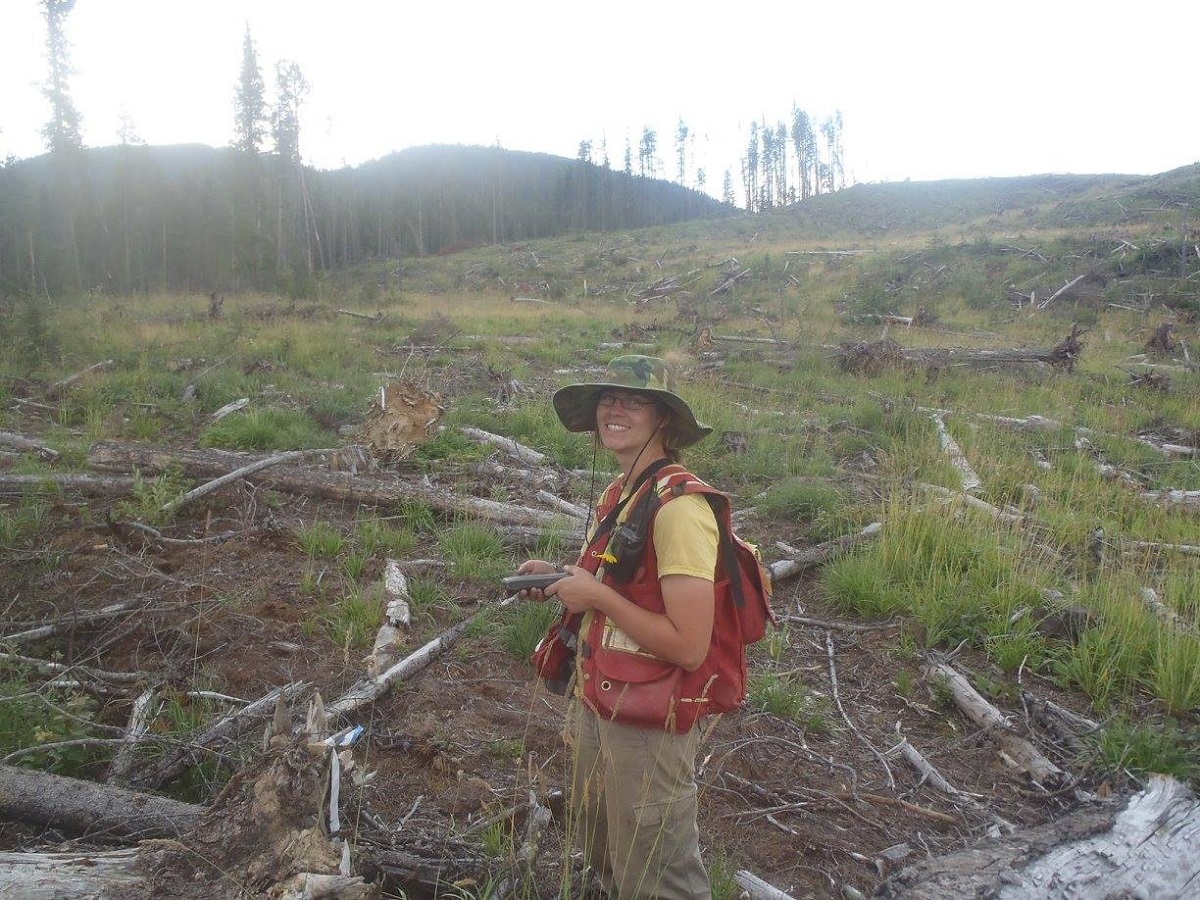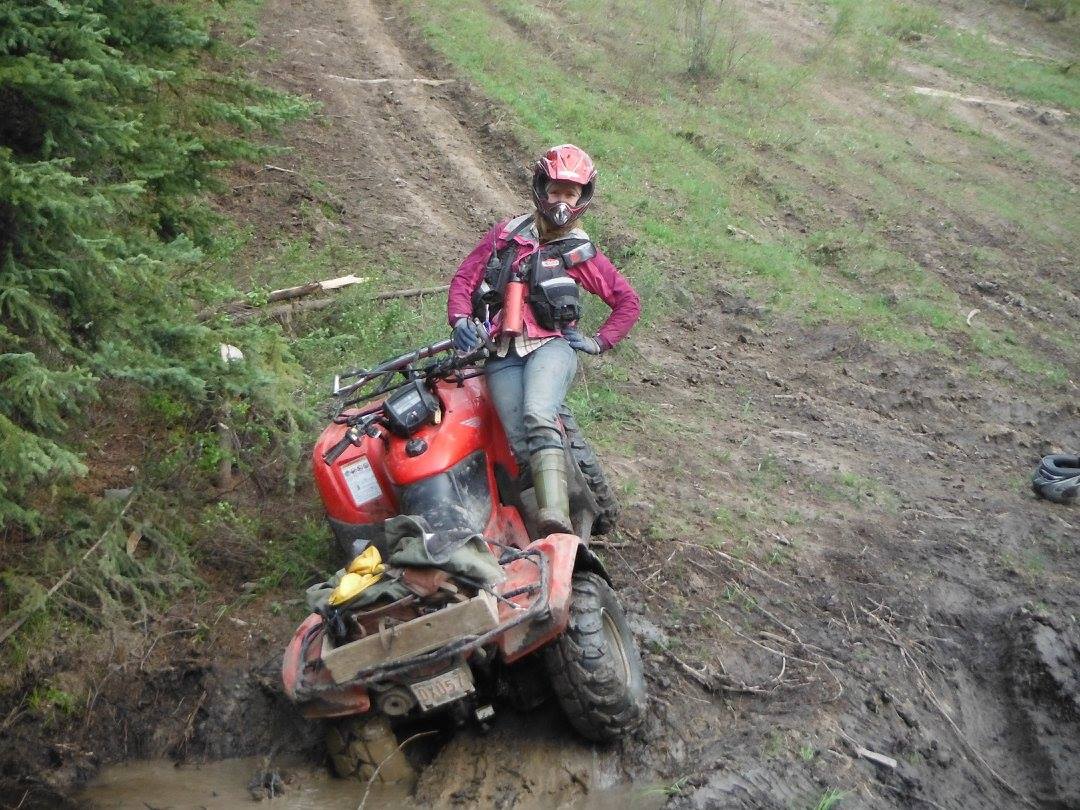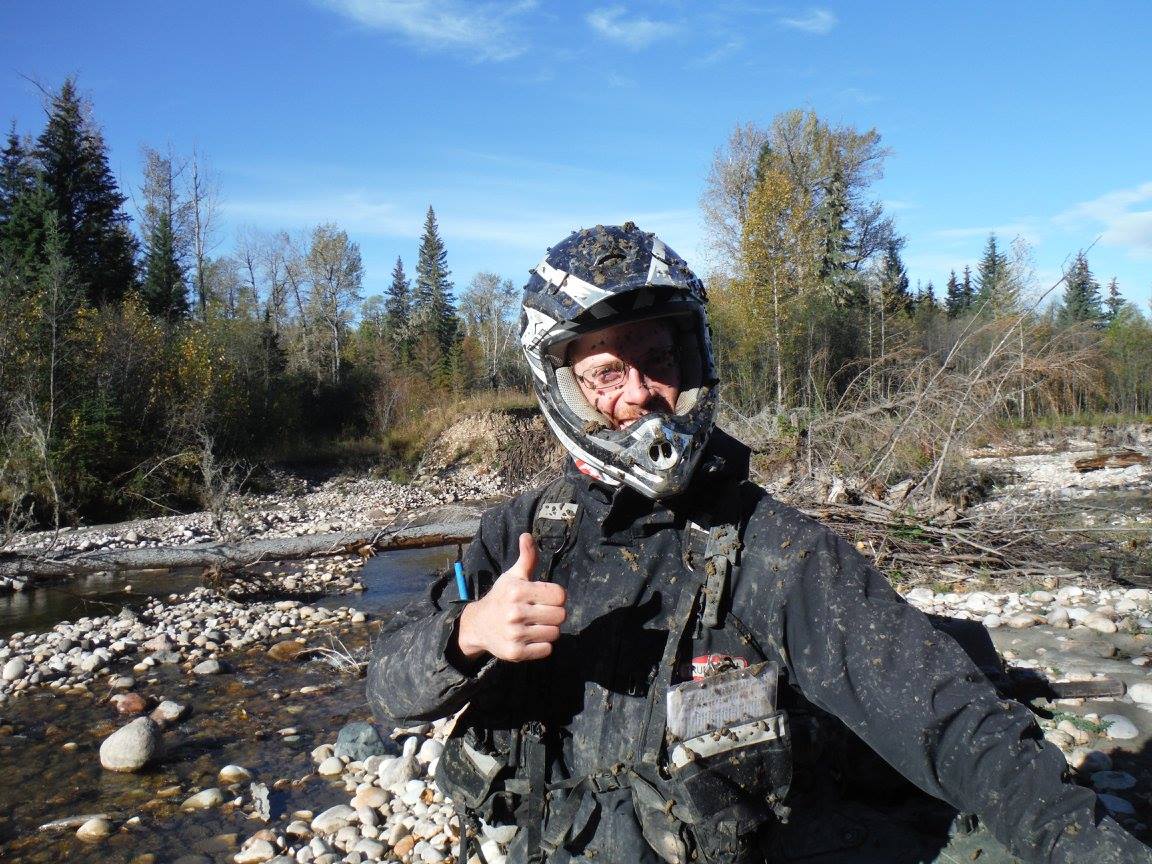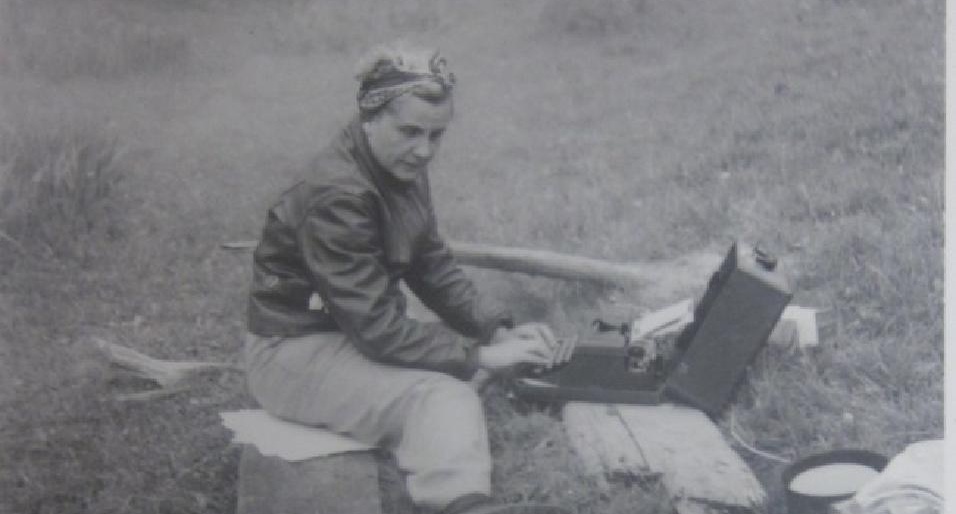Post Category : Field Life
Gear Review – Load-Bearing Equipment
Anyone that works all day in the wilderness knows the importance of having a quality piece of Load Bearing Equipment (LBE) that accommodates all the odds and ends that are required of your profession, while being comfortable enough to wear for prolonged periods. LBE comes in a variety of styles, from the standard Cruise Vest, to the more tacticool modular equipment based off military style plate carries and H-harnesses that employ MOLLE attachment systems. Archaeologists at Tree Time Services Inc. have tried and tested a whole gambit of systems over the years, and everyone but a few outliers (Reid loves his cruise vest), have adopted the True North Aero Vest – Wildland as our LBE of choice.
Before I start the review section, there is one important aspect of our job that influences what type of LBE we prefer. We need to carry more gear than can be accommodated by LBE alone, so that a good backpack (30-50 Litre) is a necessity. Even though some people have tried to fit all the required equipment in their cruise vest, you can only fit the bare minimum of what we need to bring, and have to abandon some items that aren’t necessarily required, but are extremely valuable in certain situations. Things like rain gear, extra thermal layers, extra socks, survival kits, extra food and extra water will not easily fit in a cruise vest when it is filled with all the items that are required for archaeological survey in the boreal forest. Also, if you do try to fit all those things in your cruise vest, you will no longer be able to work effectively while wearing it. Furthermore, attaching your screen to your backpack with a bungie cord is arguably the best way to carry your screen for long hikes, and allows you to stow things such as a hoodie or jacket between the screen and backpack. For these reasons, almost every archaeologist at TTSI uses a combination of some type of LBE and a backpack.
The Cruise Vest
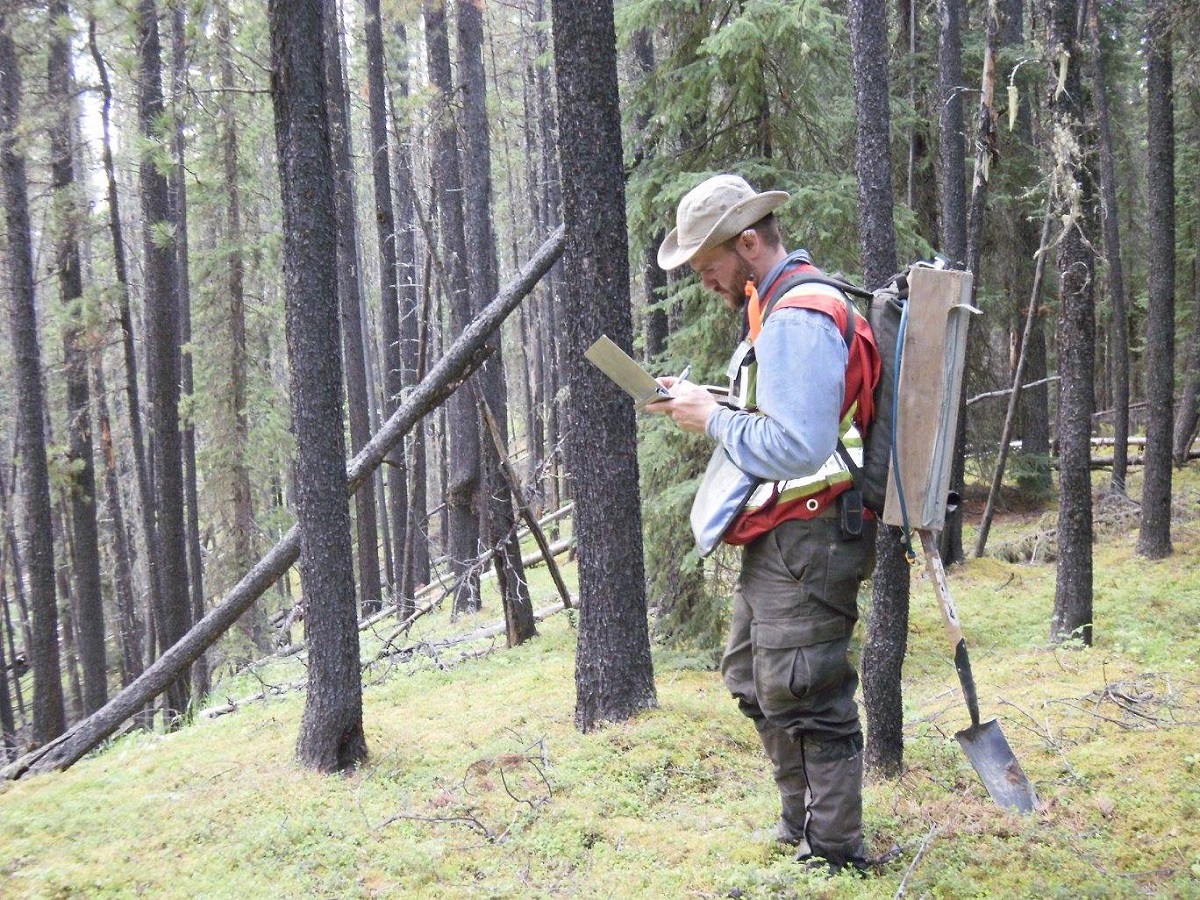
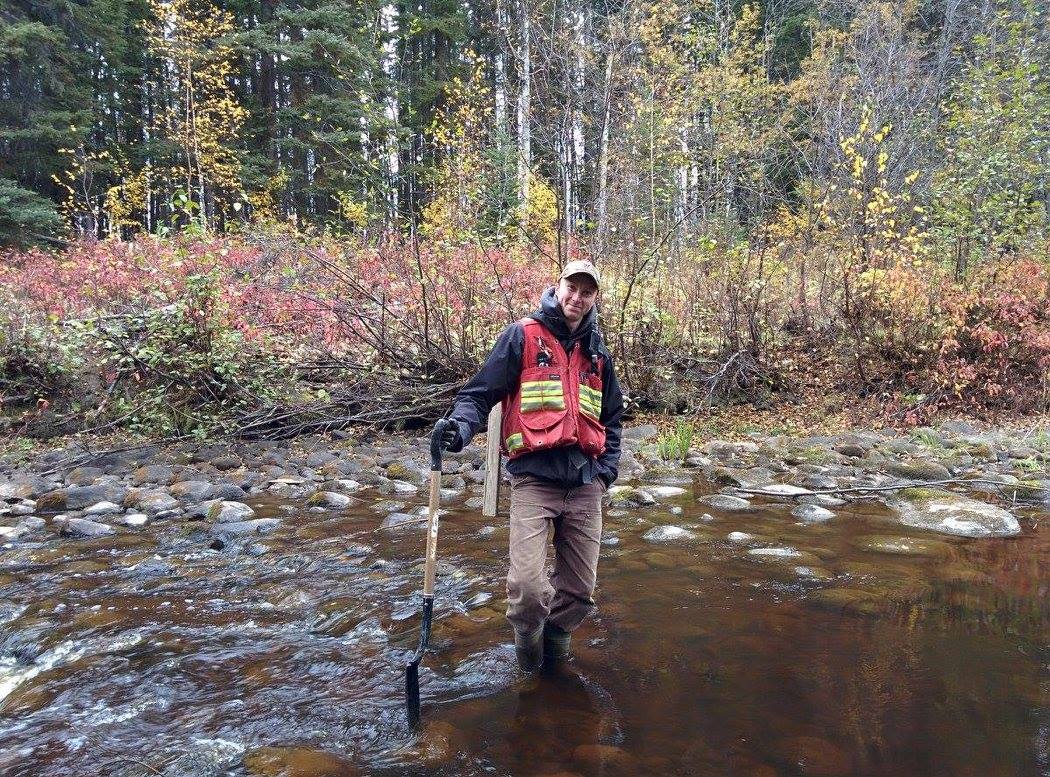
Cruise vests have been around for a long time, are widely available, and come in a variety of colour and materials. In my opinion, they are fine if your profession requires you to be mobile in the field and your profession does not require much equipment. Reid uses a cruise vest made from a plastic mesh and considers this to the best vest as it is durable and breathable. Cruise vests can be expensive ($100+), and even more so if they have an internal frame. Yet they still don’t accommodate all the extra gear needed for adverse conditions. Teresa and Tim have both used the cruise vest with internal backpack frame, but Teresa has since switched to the True North Aero and hasn’t looked back.
- Pros
- Comfortable if not carrying much equipment
- Variety of colours and fabrics
- Widely available
- Cons (With no backpack feature)
- Not enough storage space
- Very uncomfortable when overloaded
- Very uncomfortable while riding ATV
- Cannot wear while digging
- Secondary HiVis still needed
- Bad screen attachment
- Cons (With backpack feature)
- Less gear retention
- Uncomfortable with backpack
- Full pockets impede pack waist straps
- Not adjustable for winter layers
- Flimsy and wear out quickly
- Non-breathable and hot
The Modular Vest
Modular vests have been around since the 1990’s and have generally replaced what was typically referred to as “web gear” by many Armed Forces groups around the world. They employ a Pouch Attachment Ladder System (PALS), also referred to as MOLLE, which allows the user to change what types of pouches they use based on personal needs without changing the base vest. Most modular vests also act as plate carriers (body armour) and allow the user to change their load-out while still utilizing their body armour as a base. Although modular vests are widely available, most are in neutral colours or camoflage and are therefore not suited to working with a HiVis requirement. With hunters in mind, a few companies have produced modular vests that are blaze orange, and thus work as HiVis provided the rules concerning HiVis clothing are not super strict (some companies would not consider any of these options to be sufficient HiVis clothing). Kurt used a modular vest for a couple field seasons, but has since switched to the True North Aero. He provided the following list of pros and cons:
- Pros
- Modular and adaptable
- Very durable
- Equipment-specific pockets
- Can wear while digging
- Very adjustable and can fit winter layers
- No zippers
- Super Tacticool!
- Cons
- Expensive
- Most are not HiVis
- Non-breathable and hot
- Heavy
- Bulky
- Not comfortable with backpacks
True North Aero – Wildland
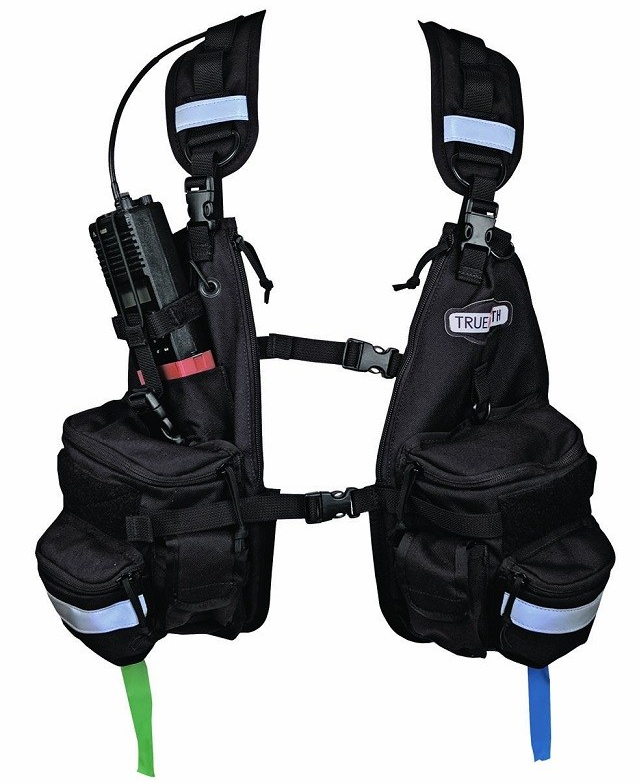
True North is a company that primarily produces gear for Wildland Fire Fighters and First Responders. The True North Aero was designed as a primary piece of LBE that could be worn comfortably with a backpack. Although True North makes specific products that compliment the Aero, we at TTSI have found that this particular LBE to work with a variety of backpacks. The Aero has a specific spot for radios, GPS, flagging, tape measure and has a fleece lined pocket that fits a iPad Mini perfectly. Essentially, the Aero can accommodate all the equipment need while actually working, and in conjunction with a 30-50 L backpack, provides all the space you will ever need. A further benefit of using the Aero in conjunction with a backpack is that since all your survey equipment fits in the vest, one does not have to unpack their backpack to survey a target. Kurt was able to obtain several Aero vest in blaze orange, but unfortunately they seem to have discontinued so only the black version is widely available. While wearing the black version, TTSI employees usually opt to wear a HiVis work shirt.
- Pros
- Very durable
- Lightweight
- Comfortable to wear with backpacks
- Breathable and cool
- Fits all survey equipment
- Holds gear secure
- Can wear while digging
- Protected inner fleece pockets
- Few zippers, but high quality
- Sheds water and dries out fast
- Very adjustable and can fit over winter layers
- Cons
- Not true HighVis
- Zippers can get clogged with mud
There are many options when it comes to LBE and like most things, not everyone will agree on what is the best. Reid stands fast as a die hard proponent of the mesh style cruise vest as it is durable, breathable and works well with his system. Similarly, Tim continues to use the internal frame cruise vest even though he has had the option to switch. However, the rest of us archaeologists at TTSI have chosen the True North – Aero as our LBE champion and never looked back. I personally think it will be a very sad day when my blaze orange version finally wears out and I am unable to get a replacement. On that day, I will regrettably don a HiVis undershirt, strap on a black True North – Aero and head off into the boreal wilderness.

